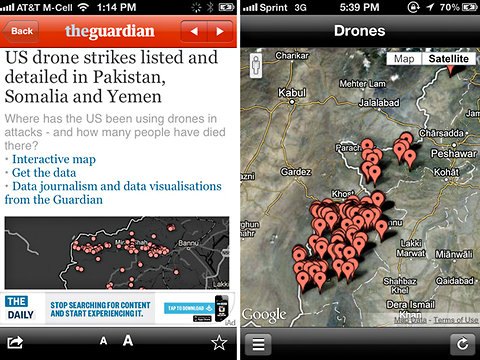The stranger responded with instructions for creating an even more secure system to protect their exchanges. Promising sensitive information, the stranger told Poitras to select long pass phrases that could withstand a brute-force attack by networked computers. “Assume that your adversary is capable of a trillion guesses per second,” the stranger wrote.
Before long, Poitras received an encrypted message that outlined a number of secret surveillance programs run by the government. She had heard of one of them but not the others. After describing each program, the stranger wrote some version of the phrase, “This I can prove.”
Seconds after she decrypted and read the e-mail, Poitras disconnected from the Internet and removed the message from her computer. “I thought, O.K., if this is true, my life just changed,” she told me last month. “It was staggering, what he claimed to know and be able to provide. I just knew that I had to change everything.”
Poitras remained wary of whoever it was she was communicating with. She worried especially that a government agent might be trying to trick her into disclosing information about the people she interviewed for her documentary, including Julian Assange, the editor of WikiLeaks. “I called him out,” Poitras recalled. “I said either you have this information and you are taking huge risks or you are trying to entrap me and the people I know, or you’re crazy.”
The answers were reassuring but not definitive. Poitras did not know the stranger’s name, sex, age or employer (C.I.A.? N.S.A.? Pentagon?). In early June, she finally got the answers. Along with her reporting partner, Glenn Greenwald, a former lawyer and a columnist for The Guardian, Poitras flew to Hong Kong and met the N.S.A. contractor Edward J. Snowden, who gave them thousands of classified documents, setting off a major controversy over the extent and legality of government surveillance. Poitras was right that, among other things, her life would never be the same.
Greenwald lives and works in a house surrounded by tropical foliage in a remote area of Rio de Janeiro. He shares the home with his Brazilian partner and their 10 dogs and one cat, and the place has the feel of a low-key fraternity that has been dropped down in the jungle. The kitchen clock is off by hours, but no one notices; dishes tend to pile up in the sink; the living room contains a table and a couch and a large TV, an Xbox console and a box of poker chips and not much else. The refrigerator is not always filled with fresh vegetables. A family of monkeys occasionally raids the banana trees in the backyard and engages in shrieking battles with the dogs.

Mauricio Lima for The New York Times
Glenn Greenwald, a writer for The Guardian, at home in Rio de Janeiro.
Greenwald does most of his work on a shaded porch, usually dressed in a T-shirt, surfer shorts and flip-flops. Over the four days I spent there, he was in perpetual motion, speaking on the phone in Portuguese and English, rushing out the door to be interviewed in the city below, answering calls and e-mails from people seeking information about Snowden, tweeting to his 225,000 followers (and conducting intense arguments with a number of them), then sitting down to write more N.S.A. articles for The Guardian, all while pleading with his dogs to stay quiet. During one especially fever-pitched moment, he hollered, “Shut up, everyone,” but they didn’t seem to care.
Amid the chaos, Poitras, an intense-looking woman of 49, sat in a spare bedroom or at the table in the living room, working in concentrated silence in front of her multiple computers. Once in a while she would walk over to the porch to talk with Greenwald about the article he was working on, or he would sometimes stop what he was doing to look at the latest version of a new video she was editing about Snowden. They would talk intensely — Greenwald far louder and more rapid-fire than Poitras — and occasionally break out laughing at some shared joke or absurd memory. The Snowden story, they both said, was a battle they were waging together, a fight against powers of surveillance that they both believe are a threat to fundamental American liberties.

Peter Maass is an investigative reporter working on a book about surveillance and privacy.
Editor: Joel Lovell
Article source: http://www.nytimes.com/2013/08/18/magazine/laura-poitras-snowden.html?partner=rss&emc=rss

